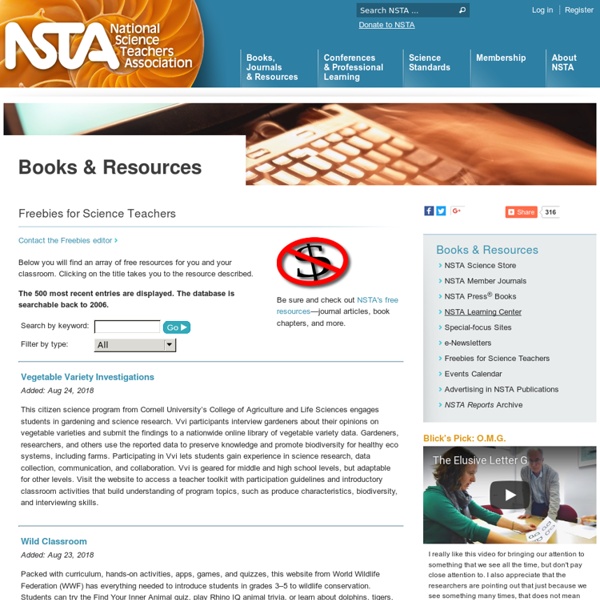200 Free Kids Educational Resources: Lessons, Apps, Books, Websites...
This collection provides a list of free educational resources for K-12 students (kindergarten through high school students) and their parents and teachers. This page is being updated and cleaned up during the COVID-19 crisis. Please tell us if we’re missing something valuable. Below you will find free video lessons/tutorials; free mobile apps; free audiobooks, ebooks and textbooks; quality YouTube channels; free foreign language lessons; test prep materials; and free web resources in academic subjects like literature, history, science and computing. Home Schooling Resources During COVID-19
Why Is It So Hard to Change How We Teach Math?
Teaching Strategies Educators have been talking about changing the traditional way of teaching math for a long time, but nothing seems to change. Elizabeth Green’s New York Times Magazine article digs into why it has been so hard for U.S schools to effectively implement changes to math pedagogy, and just how far American students have fallen behind as a result. A lot of it comes down to ensuring teachers are comfortable with the new methods, she writes:
80 Open Education Resource (OER) Tools for Publishing and Development Initiatives
Many Open Education Resources (OER) have been introduced by governments, universities, and individuals within the past few years. OERs provide teaching and learning materials that are freely available and offered online for anyone to use. Whether you’re an instructor, student, or self-learner, you have access to full courses, modules, syllabi, lectures, assignments, quizzes, activities, games, simulations, and tools to create these components. While some OERs include OpenCourseWare (OCW) or other educational materials, they may also offer the means to alter those courses through editing, adding to those courses through publication, and the ability to shape the tools that share those resources. Additionally, they may maintain forums or other platforms where individuals can collaborate on building educational tools and documentation and the reach for those materials.
Students most effectively math working on problems that they enjoy, not drills or exercises
Students learn math best when they approach the subject as something they enjoy, according to a Stanford education expert. Speed pressure, timed testing and blind memorization pose high hurdles in the youthful pursuit of math. "There is a common and damaging misconception in mathematics – the idea that strong math students are fast math students," said Jo Boaler, a Stanford professor of mathematics education and the lead author on a new working paper.
Browse All
Chelsea Cutting from Mount Gambier, South Australia, tells us about the real-world connections her students are able to make after using Illumination resources. Jan Gebert is an Illuminations lesson plan reviewer and instructor of professional and secondary education at East Stroudsburg University. So she definitely knows a thing or two about quality lessons. Illuminations asked her for her favorite out of our 600+ lessons.
Why Teens Are Impulsive, Addiction-Prone And Should Protect Their Brains
iStock By NPR Staff Teens can’t control impulses and make rapid, smart decisions like adults can — but why? Research into how the human brain develops helps explain.
Open education materials for pre-Kindergarten to high school students
I am a community moderator for opensource.com as well as a mother, a librarian, and a former public school teacher. When I began writing for this site over two years ago, it was due to my son's education and how both private and public schools were largely neglecting digital technology, global citizenship, and digital literacy. What I have discovered since exploring open source materials for children and teens is astonishing. The amount of open source materials is simply breathtaking. Every day more and more open source materials become available and accessible to all. Open source materials: where?
Americans’ increasing distrust of science — and not just on climate change
Albert Einstein delivers a lecture at the meeting of the American Association for the Advancement of Science in the auditorium of the Carnegie Institute of Technology Little Theater at Pittsburgh on Dec. 28, 1934. (AP) Eight in 10 Americans believe science has made life better for most people, but they still don't trust scientists — and/or aren't aware of their consensus — on many of the most important science-related issues of the day. And that goes for far more than just climate change. And it includes plenty of Democrats too.
Children's search engines; 13 reviewed and assessed
Introduction When searching the internet - particularly with children in mind, it's important to ensure that you can feel safe with what they are doing, and where they are going. There are a fair number of child friendly search engines available - at least, that's what they call themselves, so I decided to take a look at them to see what I thought of them.
Failing Forward: 21 Ideas To Use It In Your Classroom
Failing Forward: 21 Ideas To Help Students Keep Their Momentum by Terry Heick “Failing Forward” is a relatively recent entry into our cultural lexicon–at least as far has headlines go anyway–that has utility for students and teachers.
Kids Search Engines
EDITOR'S NOTE: For an updated look at search engines for children, see "Savvy Little Searchers: Kids' Search Engines" The services below are designed primarily to serve the needs of children, either in focus, or by filtering out sites that some parents and teachers might find inappropriate for kids. These usually include sites that deal with explicit sexual matters, porn sites, violence, hate speech, gambling and drug use.
For Students, the Importance of Doing Work That Matters
MartinaK15 By Will Richardson We’re halfway to school when my 14-year-old son remembers a homework assignment he forgot to do for biology class. “Something big?” I ask, fearing the worst. “Nah,” he says with a shrug.
Kids
From Topical Search Wiki K-12 Education Main Page Search Engines:Free of Charge/Education/K-12



